Matador Network's Blog, page 524
February 23, 2022
Las Vegas Mob Museum guide

The Mob Museum is on a unique mission. While Hollywood films have glamorized and serialized the role of the Mafia and its members, Las Vegas‘ Mob Museum aims to advance the public understanding of organized crime’s history and impact on American society.
Visiting the Las Vegas Mob Museum isn’t your traditional museum experience, however. The Mob Museum leans into hands-on activities like the incredibly entertaining Crime Lab where guests solve real-life crimes, and a Firearm Training Simulator that tests your instincts. The Underground distillery tours will walk you through the process that made Prohibition bootleggers both famous and infamous (as well as sampling a bit of Mob Museum Moonshine, Cinn-City Moonshine or The Underground Ale), before heading next door to taste handcrafted Prohibition-era cocktails at the Mob Museum Speakeasy.
Four floors of Mob history can seem overwhelming to take in, that’s why we spoke with Claire White, the Mob Museum’s Director of Education, to get the inside scoop on the best way to experience Las Vegas’ most interesting museum.
The #1 piece of advice for visiting the Las Vegas Mob MuseumAdmission fees and discount for the Las Vegas Mob MuseumHow to get to the Mob Museum and where to park?The best times to visit The Mob MuseumWhere to start your las Vegas Mob Museum visitHow long you should budget to visit the Las Vegas Mob MuseumSpecial tours and games at the Mob MuseumThe Mob Museum SpeakeasyFour must-see exhibits at the Las Vegas Mob MuseumTwo underrated experiences you should not pass at the Mob MuseumA warning for those with young childrenThe #1 piece of advice for visiting the Las Vegas Mob MuseumWhen you’re on vacation, the last thing you want to do is stand in a line. This is where White’s best piece of advice comes into play. “Definitely purchase your tickets online. It really expedites the process,” White says. “I would say for locals and tourists alike…save yourself that hassle.”
Over 400,000 visitors flock to the Mob Museum every year, so the museum in turn has spent a great deal of time to make sure that their website and accompanying smart phone app are chock-full of helpful resources and timesavers. The bright red “buy now” button can’t be missed, but you’ll also find helpful items such as parking maps, hours of operation, and interactive exhibit maps all designed to make your trip as easy as possible.
Admission fees and discount for the Las Vegas Mob MuseumGeneral Admission (all exhibits): $29.95. $16.95 for Nevada residentsDeluxe Pass (all exhibits + one interactive experience): $44.95. $29.95 for Nevada residentsPremier Pass (all exhibits + two interactive experiences): $48.95. $35.95 for Nevada residentsAdditional discounts for military service members, senior citizens, students, law enforcement personnel and more are availableHappy Hour discount: A $10 Happy Hour discount awaits if you purchase your tickets online and visit after 5 PM from Sunday to Friday, or before 11 AM on a SaturdayHow to get to the Mob Museum and where to park?
Photo: The Mob Museum
The Mob Museum is located in the heart of downtown Las Vegas adjacent to world famous Fremont Street. The historic building sits on Stewart Avenue and is a quick Uber or taxi ride from the towering resorts that line the Las Vegas Strip.
It should be noted that space for parking in the lot next to the Mob Museum is limited and fills up quickly on busy days. There is also an eight-dollar fee for four hours of parking (stay longer and you’ll be charged an additional eight dollars for another four hours). Locals will be quick to point out that ample parking can be found within a short walking distance of the museum at the nearby casinos including the El Cortez, The Grand, and Main Street Station.
If you plan on spending the day in the downtown area you may consider a ride on the free shuttle service called The Downtown Loop which transports you between most of the attractions that downtown has to offer, including the Mob Museum, the Arts District, and the Fremont Street Experience.
Address: 300 Stewart Avenue, Las Vegas, NV 89101, United States
The best times to visit the Mob MuseumThe Mob Museum is open every day from 9 AM until 9 PM, but if your schedule is a bit more flexible you’ll be rewarded. “If people’s schedules are open we always recommend that they visit in the early evening hours,” White says. Not only are the crowds a bit more manageable, but a $10 Happy Hour discount awaits if you purchase your tickets online and visit after 5 PM from Sunday to Friday, or before 11 AM on a Saturday.
“If you are only able to come on a Saturday we recommend before 11 AM,” White notes. Again, you’ll beat the crowds and you’ll get the Saturday morning “happy hour” discount, but this will oftentimes allow you to take your time exploring the museum before the late-risers descend on the popular stop.
Where to start your las Vegas Mob Museum visitWhile you are certainly free to walk about the Mob Museum at your leisure, the museum is laid out as a chronological experience. So, in order to get the complete story of organized crime, the helpful Mob Museum educators and staff urge you to take the building’s elevators to the third floor where you’ll dive into the origins of the Mob in America and how they grew from low-level gangs to highly organized syndicates.
How long should you budget to visit the Las Vegas Mob Museum“A lot of people are often surprised to know that we do have four full floors of exhibits, so if people want to do everything, or as close to everything as they can, we do generally suggest that they allot about two and a half hours,” White explains.
You can do the general walking tour in less time but with so many additional experiences, including the must-do Distillery Tour and Crime Lab, you’ll want to have enough time to see it all.
Special tours and games at the Mob MuseumSelf-guided audio tours are available in English and Spanish for eight dollars. Audio tours allow you to decide how long you want to stay at the Mob museum by offering two possible tours: A short and a long one. The short version of the tour gives busy visitors the highlights in 40 minutes. The longer tour will dive deeper into stories such as Al Capone’s prison band or former Mob defense attorney and Las Vegas mayor Oscar Goodman’s most notorious clients and famous cases. This version will last 75 minutes.
Groups of 10 or more can book a guided tour for an additional $10 per person. These tours last around 90 minutes and every guide brings their own personal interpretations and flair to the experience. Guided tours must be booked in advance.

Photo: The Mob Museum
The Distillery Tour is an experience that can only be added to your visit if you purchase a Deluxe or Premier Pass. A Mob Museum educator will take you to the museum basement which is dubbed The Underground where you’ll learn even more about Prohibition and the drinking culture that existed both before the liquor-free era and before the 1920s. You’ll be able to get up-close to the working still and sample moonshine that is distilled within the Mob Museum.
For truly unique experiences, you’ll want to gather your group for a Mob Museum Scavenger Hunt or Mob Mystery Game. The Scavenger Hunt will have you comb three floors of the museum looking for answers to questions about the history between the Mob and the law enforcement officers tasked with taking them down. The Mob Mystery Game is a real-life game of Clue, but one in which your team is trying to prevent a crime from happening. It’s an exhilarating group game that will create a lasting memory for your team.
The Mob Museum Speakeasy
Photo: The Mob Museum
The Speakeasy receives a fair share of attention thanks to its alluring Roaring Twenties atmosphere and menu of Prohibition-era craft cocktails. Here guests will travel back in time when speakeasies operated in hard-to-find places to do their part to satisfy the nation’s thirst for then-forbidden spirits.
Visitors are welcomed into the living exhibit that features the rise of flappers, jazz, and the Mafia. Learn the secrets of Paul Mares’ trumpet and discover the great lengths that people went to in order to quench their need for booze. Clever visitors can find the hidden room within the Speakeasy — Can you?
The Speakeasy also serves up sharable bites and a daily happy hour from 5 PM to 7 PM, but be warned, only those aged 21 and up can take a sip of the ice-cold gin. Visitors younger than 21 can enter the room and view the artifacts but they can’t sit down, order food, or mingle near the bar area even if accompanied by parents or legal guardians.
If you want to visit The Speakeasy and not the museum itself, find the not-so-secret-any-longer entrance near the old wooden barrel on the back corner of the building that leads you down to a private green door. Knock on the door, say the password, and you’re in. As long as you’re 21 years of age or older that is.
Four must-see exhibits at the Las Vegas Mob Museum1. The Open City exhibit
Photo: The Mob Museum
The Open City exhibit at the Mob Museum explores the transformation of Las Vegas from a remote railroad town into an international gambling destination. Las Vegas was known as an “open city” which meant the Mafia had an agreement that any syndicate could invest in the desert oasis without starting a turf war with another outfit. Mob-connected businessmen from all across the US began to set up gambling operations in Las Vegas. After all, why would you risk police harassment with illegal gambling halls when it was legal in Sin City?
2. The Underground
Photo: The Mob Museum
Most museums shy away from food and drink within their walls. The Mob Museum not only bucks this tradition, they openly encourage you to sit down, try some freshly distilled moonshine or beer, and learn about one of the most interesting eras in American history.
The Underground (on the basement level of the Mob Museum) consists of The Speakeasy, The Distillery, and a hidden VIP room within The Speakeasy. The Speakeasy is a popular throwback to the 1920s era of flapper girls, jazz, and cold gin. The Distillery is where guests learn about how the Mob filled the void created by Prohibition laws. Bootleggers, rumrunners, and lawmen all converged together to weave an incredible tapestry of American lore.
“I love our Distillery side because you can literally watch us make moonshine,” White confesses. “We make 100 percent corn, 100-proof moonshine, and on top of that there’s some old, historic stills, old liquor prescriptions, medicinal whisky bottles. I love that.”
You can also purchase a tour of The Distillery, as well as a moonshine tasting if you and your group are all 21+ years of age.
3. St. Valentine’s Day Massacre Wall
Photo: The Mob Museum
On February 14, 1929, seven members and associates of George “Bugs” Moran’s bootlegging gang were lined up against a wall and shot dead inside a commercial garage on the north side of Chicago.
Al Capone’s Chicago Outfit has always been the main suspects in the horrific shooting, but no one was ever prosecuted. The garage was demolished in 1967 but not before entrepreneur George Patey bought and recovered the bricks from that wall. Now, three hundred of those bricks have been put back together and are on display here – with bullet holes clearly marked.
4. The Historic Courtroom
Photo: The Mob Museum
When the building that is now the Mob Museum opened in 1933, it was the first US Courthouse and Post Office in the fledgling town of Las Vegas. It would later serve as host for a significant moment in Las Vegas and organized crime history.
“The primary federal courtroom has been restored to how it appeared in the early 1950s and that coincides with one of the most historically significant things that happened in our building which is the November 15, 1950, hearing of the Kefauver committee,” White explains.
This hearing was held by Tennessee Senator and Presidential hopeful Estes Kefauver in the second floor courtroom where several Mob affiliates were questioned about organized crime involvement in the casino industry. The Historic Courtroom now serves as a theater where guests are engrossed into high-tech video productions that tell the story of those hearings.
Two underrated experiences you should not pass at the Mob Museum1. Global Networks Touch Wall
Photo: The Mob Museum
Get an up-close look at some of the most prominent organized crime groups in the world today at the Global Networks Touch Wall. This is a hands-on experience which allows guests to explore today’s criminal element through video, images, maps, and texts.
This experience is included with every ticket and provides a great look into real mob-related events that are happening around the globe today.
2. The Crime Lab
Photo: The Mob Museum
White is quick to call the Crime Lab the “hidden gem” of the Mob Museum. Access to the Crime Lab is an upgraded museum experience that allows visitors the chance to explore the work of crime scene investigators, DNA profilers, ballistics experts, and medical examiners. Museum educators provide information and assistance as guests engage in forensic activities. You and your group will need to upgrade from the General Admission ticket to either a Deluxe or Premier Pass to solve these mysteries, but the extra cost is more than worth it for the unique memories that you and your group will have. Note that only guests 11+ years of age or older are allowed to participate.
A warning for those with young childrenWhile the Mob Museum is a great family experience, there are certain images and at least one area that may be too graphic for young children. That exhibit in particular, “The Mob’s Greatest Hits,” depicts images of Mafia killings. The exhibit also displays a gas chamber chair that was used to execute criminals in Nevada.
The area is clearly labeled as graphic and there is a passage to go around the exhibit for those who don’t wish to see it. There are some images of mob killings (such as “Bugsy” Siegel’s murder) that can be found thoughout the Mob Museum, but with a watchful eye you can intercept any small eyes if you wish. 
The 9 hardest hikes in the US National Park Service you can do in a day

it’s no secret that the National Park Service protects some of the most fantastic landscapes and geological features in the United States. Hikers, tourists, and adventurers from across the world travel to the system’s 63 national parks to see tall waterfalls, stunning old-growth forests, and wildlife in their natural habitats.
The one-mile interpretive trail behind many park visitor centers will be plenty of challenge for some travelers, which is absolutely fine. But advanced hikers who find flat trails a little lacking in excitement may need something a bit more challenging. The hardest hikes in the US’s national parks below are long, sure — but they’re also steep, unpredictable, and go through some of the country’s harshest landscapes and wildest weather. But if you’re an expert, experienced hiker searching for a hike that offers a little more (or in some cases, a lot more) challenge, here are nine of the hardest hikes in the US National Park Service you can finish in one very long day.
1. South Kaibab to Bright Angel Trailhead, AZ
Photo: National Park Service/Public Domani
Park: Grand Canyon National ParkDistance: 16.5 milesType: Point to pointElevation gain/loss: +/- 4,860 feetThe Grand Canyon is immense in a way that you can’t truly understand until you stand on its edge. But for an extra-astonishing view, you’ll need to go below the rim to see the vastness of the canyon – it’s 18 miles across, after all. But as enticing as reaching the Colorado River at the bottom of the canyon may seem, there’s no easy way down, and many hikers choose to make the trek in two or three days.
But fit travelers ready to take on one of the hardest hikes in the US may want to consider the South Kaibab Trail as a day hike. Dropping nearly 5,000 feet into the canyon, hikers will traverse what feels like a giant stairway. And canyons are different from mountains; it’s harder on the way back. For every step you take down, you’re going to take one back up.
Temperatures in the summer can reach as high as 120 degrees Fahrenheit in the canyon. Hikers attempting the South Kaibab to the Bright Angel Trailhead will find potable water year-round at only one spot – Indian Garden Campground – and you won’t reach it until you’re about 75 percent of the way through, distance-wise. Dehydration is a major problem. The National Park Service at the Grand Canyon rescued 235 hikers in 2020 alone, more than any other national park in the country. Make sure you are incredibly prepared for beginning this challenge.
2. Cascade Pass to Sahale Arm, WA
Photo: National Park Service/Public Domani
Park: North Cascades National ParkDistance: 12 milesType: Out and backElevation gain/loss: +/- 4,115 feetThe Cascade Pass trail may seem like a stroll through alpine meadows with glacier lilies, but the weather and terrain in the Stephen Mather Wilderness can change instantly, leaving hikers to trudge through deep snowfields along steep mountain ridges. However, those brave enough to tackle the 12-mile hike will find breathtaking views of features with daunting monikers like “Torment Tower” and “Cutthroat Lake.” And hikers reaching the end of Sahale Arm will find themselves looking up at a quarter-mile-long glacier.
While the trail keeps a steady pitch, most of the mountain pass is in the subalpine zone. This leaves the area exposed to heavy snow and wind. Hikers who choose to hike the Cascade Pass and Sahale Arm should also be prepared to ascend over 4,000 feet, with a big portion of that packed into the final push to the glacier.
As of this writing, the road to Cascade Pass is closed three miles from the trailhead. While still open for hiking, the closure makes this trail 18 miles long. It’s one of the hardest hikes in the US even when the weather is good, and when it’s snowy or windy, well, it’s reserved for travelers who don’t mind a little discomfort.
3. Paintbrush Canyon – Cascade Canyon Loop, WY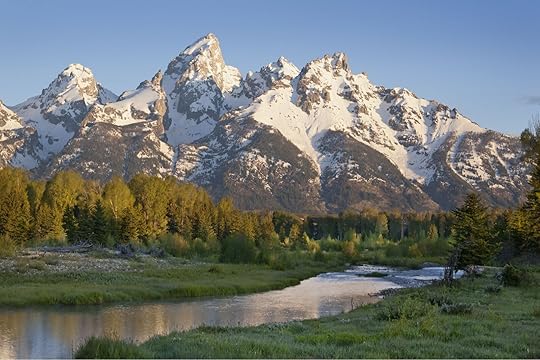
Photo: Dan Thornberg/Shutterstock
Park: Grand Teton National ParkDistance: 21 milesType: LoopElevation gain/loss: +/- 4,230 feetGrand Teton National Park is home to one of the most iconic mountain ranges in the country, and the Cascade Loop trail gives you a taste of its ruggedness. The 21-mile trail includes an elevation gain of nearly 4,000 feet, and while most hikers choose to complete the hike in two days, others attempt to do it in one.
The trail begins at nearly 7,000 feet above sea level, well into the subalpine range and high enough to cause elevation sickness after just a few minutes. Hikers may face heavy winds, deep snow, and dangerous thunderstorms. Those attempting to complete the hike in a single day may want to begin this hike early (as in, in-the-dark early) to allow time to rest along the trail and avoid getting caught on the treacherous terrain in the dark.
4. The Skyline Trail to Camp Muir, WA
Photo: Mike Peters/Shutterstock
Park: Mt. Rainier National ParkDistance: 10 milesType: Out and backElevation gain/loss: +/- 4,850The Camp Muir Trail is only the first part of Mt. Rainier’s three-day summit. Covering 14.5 miles and gaining 9,000 feet of elevation gain, Rainier’s summit is best done in a group with a professional guide. It’s decidedly not a day hike.
But the Camp Muir Trail alone stands as one of the hardest hikes in the US to complete in a single day. It’s a challenge, with some hikers opting to bail just below the camp base. It only covers nine miles out and back, but you’ll ascend more than 4,500 feet to reach Camp Muir. However, the intense elevation gain is only part of what makes this trail so difficult.
After a strenuous 2.3-mile hike past McClure Rock (near the trailhead), hikers will enter the Muir Snowfield. Prone to white-out conditions and inclement weather, those attempting the ascent will have to navigate 2.2 miles along an unmarked route. You may need to glissade or wear crampons, and it’s possible at any time to posthole (break through the snow) with each step. With glaciers on either side, one mistake could lead to getting lost, injured, or worse. It’s not technically mountaineering, but it’s a challenging hike requiring knowledge of safely moving across snow. It’s undoubtedly the hardest one-day hike in the park.
Note: Camp Muir is one of the primary camps for those attempting to summit Mount Rainier, and any hiking above the camp will require a permit.
5. Half Dome, CA
Photo: Suzie Dundas
Park: Yosemite National ParkDistance: 16 milesType: Out and backElevation gain/loss: +/- 4,860Undoubtedly the most recognizable feature in Yosemite, Half Dome has long drawn the eyes and attention of the most hardened adventurers. Hikers will cover nearly 15 miles along the trail and ascend 4,800 feet to stand on top of the park’s defining feature. The shortest route, which isn’t short at all, starts at the Mist Trail trailhead.
However, the hike to the summit would not be possible without the cables to assist hikers up the final 400 feet of gain. While most of the hike travels through the Yosemite Wilderness, hikers will have views of the High Sierras and Yosemite Valley below as soon as they near Vernal Falls.
Be sure to pace yourself – just before the cable-assisted climb is an equally hard section climbing up what’s called the “sub dome,” which gains 600 feet in a quarter-mile. It’s immediately followed by the massive hike up the actual half dome. Expect to have sore legs.
Note: This hike requires a permit to ascend the cable assists, which you can get via a lottery system at Recreation.gov. The cables are only up during the summer and it’s illegal (and deadly) to hike when they’re own.
6. Long’s Peak, CO
Photo: Rosemary Woller/Shutterstock
Park: Rocky Mountain National ParkDistance: 14.5 milesType: Out and backElevation gain/loss: +/- 5,100 feetIn Rocky Mountain National Park, the hike to Long’s Peak is formidable and generally considered one of the hardest hikes in the US, not just in Colorado. Hikers will cover more than 15 miles on foot and climb nearly 5,000 feet of elevation before reaching the summit at 14,259 feet above sea level; altitude sickness is a common issue. Considered one of the most dangerous hikes in Colorado, the distance and height just scrape the surface of the challenges hikers will face on this mountain.
Along with many of Colorado’s 14ers, Long’s Peak is notorious for its brutal thunderstorms. Hikers attempting the summit are strongly recommended to start this hike as early as 3:00 AM to avoid the storms that typically begin mid-afternoon. Conditions can get slick, so those attempting the climb should be cautious when navigating the mountain’s challenging boulder field. Carry enough supplies to stay dry and warm (including a bivy sack and emergency blanket) in case you end up stuck on the trail into the evening. It’s borderline mountaineering and not a standard hike.
7. The Narrows (Top Down), UT
Photo: Suzie Dundas
Park: Zion National ParkDistance: 17.5 milesType: Point to pointElevation gain/loss: – 1,500 feetThe Narrows on the Virgin River is one of Arizona‘s most spectacular slot canyons. Hikers will find themselves sandwiched between 1,000-foot-tall walls just 20 feet apart in sections. While many explorers choose to backpack through these famous canyons, others take on the 15.5-mile-long trail in a single day.
Hikers that plan to hike the trail from top to bottom will face unique challenges. While the mileage is enough to test even adept adventurers, most of the trek involves crossing and wading through the Virgin River. With water as cold as 31 degrees in late autumn, hikers will certainly want tall, waterproof waders, if not a full wetsuit. But that’s only part of what makes this day hike a formidable one.
Hikers in the depths of The Narrows must consider a major risk: flash floods. Additionally, the water can be fast, deep, and flowing, and most of the trek is across slippery rocks that can shift and move under your weight.
Fortunately, it’s no secret that this is one of the hardest hikes in the US to do in a day, and Zion National Park closely controls its visitors’ safety. When the National Weather Service issues a flash flood warning, the park closes the Narrows until the risk subsides. But it’s not foolproof. Weather can be unpredictable, and flash floods can catch hikers off-guard.
Oh, and if that wasn’t enough to make you think twice, the river is filled with cyanotoxins that can be harmful or even deadly if ingested. So simply put: don’t drink the water.
Note: Hiking the Narrows from top to bottom requires a backcountry permit. The easiest way to see the southern part of the Narrows is to hike up from the Temple of Sinawava for a far more leisurely (and shuttle-accessed) trek.
8. Highline Trail to Grinnell Glacier Overlook, MT
Photo: Stefan Wille/Shutterstock
Park: Glacier National ParkDistance: 15.5 milesType: Out and backElevation gain/loss: +/- 2,820 feetOne of the most popular day hikes in the country, the Highline Trail from Logan Pass highlights the enormity of Glacier National Park’s features: expect to see towering mountains, deep gorges, and wildlife along this trail, which starts at 6,800 feet in elevation. Running parallel to the snow line, hikers will travel 15 miles to the Grinnell Glacier Overlook, where they’ll climb 1,000 feet in just half a mile to sit high above the glacier.
The trail presents many challenges and truly earns its designation as one of the hardest hikes in the US park service. Much of the trail is exposed with no protection from weather, meandering around tight corners with sheer drops. The snowline amplifies these intimidating areas as the snow begins to melt with the rising sun. Hikers should be mindful of their footing as they traverse the slippery rocks leading to the overlook. Icy sections of trail are common.
After traveling 6.8 miles, the real challenge begins. Hikers must ascend an incredible slope into the mountain range, where melting water quickly freezes along the trail. A slip on this section could lead to serious injury without proper equipment.
Hikers should consider hiking very early (which should also help avoid most crowds) and packing extra traction for difficult areas. And remember that grizzly bears are very, very common in Glacier National Park. You must carry bear spray and have it quickly accessible the entire time.
9. Mt. Washington via Jewell Trail, NH
Photo: David Boutin/Shutterstock
Park: White Mountain National ForestDistance: 9.2 milesType: LoopElevation gain/loss: +/- 4,230 feetWhile the Presidential Range isn’t technically part of the park system, this arduous hike is well-worth a spot on this list (and Mt. Washington is the tallest peak in the White Mountain National Forest). The trek will test hikers with a nine-mile, out-and-back trail gaining 3,300 feet of elevation. It is, without a doubt, one of the hardest hikes in the US Eastern Seaboard.
Even experienced trekkers should carefully consider whether they’re up to making the hike up Mt. Washington. While nine miles may seem ginger compared to the other strenuous one-day hikes on this list, Mt. Washington is notorious for dangerous and unpredictable weather. In 1934, scientists recorded a surface wind speed of 231 mph at the summit – the highest recorded wind speed on the planet. It’s only been exceeded one time – and only by an extra four mph — by a massive cyclone in Australia in 1996.
Hikers attempting to summit Mt. Washington should be prepared to turn around. At any time, powerful storms can roll in. Hikers will face strong wind, snow, and fog, and it’s very easy to get blown off course without knowing it. A misstep can lead hikers deep into the forest before realizing they’ve made a wrong turn. It’s common for hikers to attempt this summit several times before one day finally offers ideal enough weather and conditions to reach the peak successfully. You’ll need mountaineering gear if you try for a winter summit. 
More like thisParks + WildernessThe best national parks for every type of traveler
Houston Airbnbs to experience the city’s food, music, and history

Houston is the most populous city in Texas, so undoubtedly, there are many things to do on a trip here. Explore the big city from the historic Heights area with its rich character-filled architecture to The Museum District, home to Hermann Park, the Houston Zoo, and other world-class museums. To get your Houston adventure started, here are the top Airbnb Houston rentals across the city in the city’s most popular neighborhoods.
Airbnb Houston rentals in The HeightsAirbnb Houston rentals in MontroseAirbnb Houston rentals in The Museum DistrictAirbnb Houston rentals in Galleria/UptownAirbnb Houston rentals in River OaksWe hope you love the Airbnb Houston properties we recommend! Just so you know, Matador may collect a small commission from the links on this page if you decide to book a stay. Listed prices are accurate as of the time of publication. See our full Advertiser Disclosure here.
Airbnb Houston rentals in The HeightsModern historic home in The Heights

Photo: Airbnb

Photo: Airbnb

Photo: Airbnb

Photo: Airbnb
Guests can enjoy this historic home in the heights. It’s filled with modern touches while still showcasing the classic amenities the neighborhood has to offer. Take advantage of the full kitchen, living room, and spacious outdoor lounge with a seating area and a BBQ grill. The house is near many restaurants and shops located downtown and the Energy Corridor.
Four guests, one bedroom
Price: $114 per night

Photo: Airbnb

Photo: Airbnb

Photo: Airbnb

Photo: Airbnb
Another historic home in The Heights is this perfect gateway spot for family and friend vacations alike. The stylish home has a spacious living room, kitchen, bedrooms, and a huge back patio perfect for entertaining. The Studewood park with a bike trail is only a few minutes away, along with the Toyota Center, Dynamo Stadium, Minute Maid Park, Discovery Green Park, and the Houston Zoo.
Six guests, two bedrooms
Price: $299 per night
Airbnb Houston rentals in MontroseBohemian bungalow with outdoor patio and swing lounge
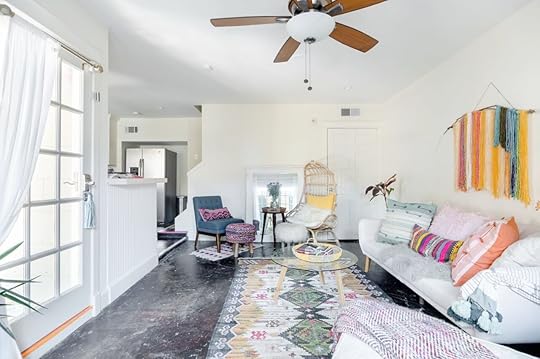
Photo: Airbnb

Photo: Airbnb

Photo: Airbnb

Photo: Airbnb
Enjoy this bohemian-styled home in the heart of Montrose. This airy and artsy property is the perfect place at which to escape reality and enjoy all that Houston has to offer. There is a fully equipped kitchen, and an open colorful living room leads directly to the terrace and backyard area. The home has a spacious outdoor space with multiple seating areas hanging swing chairs to create a relaxing garden theme.
Four guests, one bedroom
Price: $135 per night
Chic centrally located Montrose condominium
Taking a trip to Texas? Check out Matador’s guides to the best places to stay across the Lone Star State:
The best Texas Airbnbs to experience Lone Star culture 9 San Antonio Airbnbs within walking distance of the riverwalk The 9 most exciting boutique hotels in Dallas These 9 luxurious Houston Airbnbs are the best in the heart of the city The best Austin Airbnbs for large groups

Photo: Airbnb

Photo: Airbnb

Photo: Airbnb

Photo: Airbnb
This stunning Montrose retreat is centrally located and conveniently near all attractions in the Montrose area. A clean, comfortable property, you’ll enjoy the mix of cozy and ergonomic styles with a hint of modern design. The home features an open floor plan kitchen that leads into the spacious living room. The house is equipped with the amenities needed for a Houston vacation.
Five guests, two bedrooms
Price: $201 per night
Airbnb Houston rentals in The Museum DistrictNewly renovated modern and fashionable apartment

Photo: Airbnb

Photo: Airbnb

Photo: Airbnb

Photo: Airbnb
Welcome to this modern, renovated apartment right in the heart of The Museum District. This stylish apartment has an open floor plan that flows throughout the apartment — a fully stocked kitchen with an island and a spacious living room for entertainment. The apartment is within walking distance of many restaurants, shops, and famous museums in Houston.
Six guests, two bedrooms
Price: $152 per night

Photo: Airbnb

Photo: Airbnb

Photo: Airbnb

Photo: Airbnb
This trendy modern 2,400 square foot home in Musem Park is the perfect place for a Houston gateway. The house has a spacious living room and kitchen that make up the downstairs area. There is also a relaxing outdoor patio area to sit and wind down with a glass of wine after a day of exploring the city.
Six guests, three bedrooms
Price: $291 per night
Airbnb Houston rentals in Galleria/UptownLuxury three-story condo near Galleria Mall

Photo: Airbnb

Photo: Airbnb

Photo: Airbnb
This luxury, cozy three-story condo is conveniently located near all activities and entertainment. The condo has a full kitchen and living room on the main level and three bedrooms on the second floor. It’s perfect for families as it’s packed with cribs and high chairs for families with small children., and is just one mile away from Galleria Mall and a few minutes from downtown, water wall park, the aquarium, and more Houston entertainment.
Nine guests, three bedrooms
Price: $271 per night
Modern apartment within walking distance to nightlife entertainment

Photo: Airbnb

Photo: Airbnb

Photo: Airbnb
Check out this chic and luxury apartment located “inside the loop” that is right in the middle of the Galleria area and near the entertainment. The apartment features a balcony with stunning views, stainless steel appliances, and a spacious floor plan. The spot is in an ideal location if you’re looking to be within walking distance of nightlife, shops, and restaurants.
Five guests, one bedroom
Price: $162 per night
Airbnb Houston rentals in River OaksContemporary apartment minutes away from Midtown

Photo: Airbnb

Photo: Airbnb

Photo: Airbnb

Photo: Airbnb
This chic and cozy modern apartment features an entire kitchen, dining area, and living room. There is a balcony for guests to enjoy the Houston weather or a cup of coffee in the morning. The apartment is conveniently located near all attractions like the Galleria Mall, the Art Institute of Houston, and Midtown.
Three guests, one bedroom
Price: $107 per night

Photo: Airbnb

Photo: Airbnb

Photo: Airbnb
This luxury apartment home is between Uptown and Downtown Houston in a quiet residential neighborhood. With a full kitchen and living room with a door that leads to the balcony, this apartment has everything one would need for a trip to Houston. The apartment is near top destinations like the mall River Oaks Shopping Center and sits just south of Memorial Park. 
Four guests, one bedroom
Price: $112 per night
Destinations out of cell phone range

Over a decade ago, two Steves — Jobs and Wozniak, that is — blew the collective mind of our generation by democratizing the smartphone. Today, we consider it normal to walk around with some of the most advanced technology available tucked into our back pockets, constantly connected to our friends, family, and complete strangers (AKA “followers”). While most of us can agree that putting down our phones every once in a while is beneficial, it’s hard to ignore the allure of dinging messages and brimming inboxes. So if you want a digital detox but can’t accomplish it unless there is literally zero cell service, here are seven remote vacation spots that might just make you forget pocket computers were ever invented. Or at least just rid you of that FOMO for a few days.
1. Bhutan
Photo: MC Noppadol/Shutterstock
This small Buddhist kingdom located just east of India uses a Gross National Happiness index to track progress and only legalized the internet in 1999. To prevent mass tourism, Bhutan limits the number of tourists to their remote vacation spots and requires most visitors to abide by a $250-a-day tour package that includes all food, accommodation, and guides. But don’t let this scare you off, there is a lot of choice within this structure and — with almost two-thirds of the country unreachable by road — much to explore. Head for the Himalayas on the Jhomolhari Trek to spend 9 days hiking ancient trade routes with a snow-capped backdrop, and be sure to visit the cliff-clinging Paro Taktsang monastery.
2. Chumbe Island, Zanzibar, Tanzania
Photo: Moiz Husein 2018/Shutterstock
Located off the coast of Zanzibar, Chumbe Island is a protected coral reef sanctuary and forest reserve run by a nonprofit that encourages ecotourism. Enjoy one of our world’s most spectacular reefs guilt-free by staying in fully-sustainable accommodation complete with composting toilets, rainwater caches, and solar water heating. With no electrical outlets, your devices will soon be dead, so put down the tech, pick up a snorkel, and head to the reef to see some of nature’s works of art. Enjoy meals of fresh local fish and produce prepared by onsite chefs overlooking the expanse of the Indian Ocean and some of the starriest skies you may ever see.
3. Dzanga-Sangha National Park, Central African Republic
Photo: Sergey Uryadnikov/Shutterstock
This protected reserve gave a home to the vulnerable animals of the Central African Republic during a tumultuous time of armed conflict and unrest. You can now safely visit this national park in the middle of a tropical forest where elephants, gorillas, and giant forest hogs are common sights. In the safe hands of a Pygmy tracker, head into the rainforest via elephant tracks following the subtle signs of gorilla activity to keep tabs on the animals for the groups of researchers stationed in the area. While you’re not guaranteed to see a gorilla, you will definitely remember the adrenaline-pumping trek through the dense forest. When you tire of forest life, hop in a traditional dugout canoe for some bird-watching down the Sangha River. Haggle with the local fishermen for their catch of the day, then take your prize back to camp for one very fresh meal.
4. Grand Canyon National Park, Arizona
Photo: Amineah/Shutterstock
Those pesky reception bars won’t be able to reach you at the bottom of the United States’ largest canyon. If you’re up for a challenge, hike the 23-mile Rim-to-Rim trail, where you can ogle rock formations sculpted by nature’s whims over two million years ago. The hike down to the canyon floor takes you from leafy trees to water-hoarding cacti overlooking the Colorado River. If you want the views without the calf cramps, enjoy the singular gait of a local mule as your transport of choice.
There are several campsites and lodges available on route, but be sure to book six — eight months in advance if you want to be guaranteed a spot. Those feeling lucky can check for cancellations in the days leading up to your hike.
5. Yoho National Park, Canada
Photo: Don Mammoser/Shutterstock
Yoho National Park — named from the Cree exclamation for awe and wonder — would leave you too captivated to Instagram even if there was cell phone service available. But there isn’t, so leave your phones behind and head to British Columbia where aquamarine lakes reflect the jagged peaks of the Rocky Mountains. In summer and autumn, visit Takakkaw Falls, the second highest waterfall in Canada, and book a tour of the Burgess Shale Fossil Beds to see the best preserved prehistoric marine organisms in the world. Once the snow hits, rent equipment at Emerald Lake and follow the well-kept trails for some scenic cross-country skiing.
6. Puerto Natales, Chile
Photo: SL-Photography/Shutterstock
Puerto Natales sits at the gateway to the dramatic Torres del Paine National Park, where you can spend days in tech-less bliss trekking through the remote vacation spots such as glacial lakes and alpine passes of the Chilean Patagonia. The park is popular, but for good reason: you’ll have a hard time choosing which skyscraping rock formation or jade-colored lake to visit first. For those who want the trek without roughing it, trails now have a strict booking system that ensures a shower, comfy bed, and a hot meal. If you arrive outside the ideal November-April season, skip the national park and book a kayaking tour to the Balmaceda and Serrano Glaciers or hop on a catamaran for an intimate look at Chilean sea life.
7. Greenbank, West Virginia
Photo: John M. Chase/Shutterstock
And if you really need to have your phone disabled, this small town in rural West Virginia will do the trick. As home to the world’s largest steerable radio telescope, the town is cut off from all cell service and WiFi so that scientists can listen to galaxies exploding at the end of the universe. Spend the day at the Greenbank Observatory learning about cutting-edge science technology and enjoying the delights of the onsite Starlight Cafe. Be sure to visit the nearby Cass Scenic Railway where you can ride a vintage steam engine through the Allegheny Mountains. 
A version of this article was previously published on May 1, 2018, and was updated on February 23, 2022.
More like thisLifestyleI’m a millennial who does not own a cell phone. Here’s why I think it makes my life betterFebruary 22, 2022
Two northern white rhino embryos created as scientists race against extinction

After Sudan, the last male northern white rhino, died in 2018, it was up to science to save the species. One project has already made significant progress: BioRescue, which is funded by the German Federal Ministry of Education and Research.
The consortium successfully created two new northern white rhino embryos between October 2021 and February 2022. This brings the total up to 14 northern white rhino embryos. Northern white rhino Fatu at Ol Pejeta Conservancy in Kenya provided the oocytes (egg cells). Then the eggs traveled to Avantea laboratory in Italy to mature and be inseminated. The embryos were then cryopreserved and will eventually be supported by southern white rhino female surrogates.

Photo: BioRescue/Jan Zwilling
Northern white rhinos were almost poached to extinction for their horns in the ‘70s and ‘80s. In the ’90s and 2000s, the species also suffered from conflict in some parts of Africa. In 2009, two male rhinos, Sudan and Suni, and two female rhinos, Najin and Fatu, were moved from a zoo in the Czech Republic to the Ol Pejeta wildlife conservancy in Kenya, where they are guarded 24/7. Now, only the two female rhinos remain, and Najin was dropped from the breeding program in 2021.
The two procedures at Ol Pejeta mark the seventh and eighth successful oocytes collection conducted by scientists and conservationists of Leibniz Institute for Zoo and Wildlife Research (Leibniz-IZW), Safari Park Dvůr Králové, Kenya Wildlife Service, Wildlife Research and Training Institute, and Ol Pejeta Conservancy. Since 2019, the team retrieved 119 oocytes from Fatu, which has resulted in 14 successful embryos. Eleven embryos were produced from Fatu and Suni, and three embryos were produced from Fatu and Angalifu, a white rhino who died in 2014 at the San Diego Zoo.

Photo: BioRescue/Jan Zwilling
The project hopes they will be able to keep collecting oocytes from Fatu as long as it’s not dangerous to do so and the procedure continues to be successful. 
The largest penguin facility in the world just reopened in Detroit with more than 75 birds

If you love penguins (who doesn’t), a trip to Detroit is worth it to see these majestic creatures at the Polk Penguin Conservation Center at the Detroit Zoo, which is the largest penguin facility in the world. The center recently re-opened for the first time since September 2019, when it closed for waterproofing repairs.
The re-opened exhibit has been upgraded with a section of glass flooring so guests can see birds swimming below their feet. The zoo also made changes to the environment like repainted rock surfaces, more nesting areas, and a second snow machine within the habitat to keep things icy. The exhibit is a 326,000-gallon, 25-foot-deep aquatic area with breathtaking views.

Photo: Polk Penguin Conservation Center
“While supervising the necessary waterproofing repairs, it was important for us to also use this time to make enhancements to the penguins’ welfare and our guests’ experiences,” said DZS Executive Director and CEO Dr. Hayley Murphy in a statement. “Millions of visitors, from all over the world,
have flocked to this conservation center since it opened in April 2016, and we are so thrilled to open the doors again this morning.”
The goal of the PPCC is to encourage the penguins to show their wild behavior. The re-opened exhibit will also include a species new to the PPCC: Chinstrap penguins. That means visitors can now find five species in the display, with more than 75 King, Rockhopper, Macaroni, Gentoo, and Chinstrap penguins. And in August 2020, a king penguin chick hatched five new penguins at the Detroit Zoo for the first time in 20 years.

Photo: Polk Penguin Conservation Center
“The chinstraps settled right in and became avid swimmers. Once the lights come on for the day, TJ, Haiku, Kringle, and Turtle immediately dive into the pool,” said Detroit Zoological Society (DZS) Curator of Birds Bonnie Van Dam. “They also had no problem integrating with the other species. Penguins thrive within larger colonies, and they are just exceptional at mingling.”

Photo: Polk Penguin Conservation Center
To visit the penguins, visitors can purchase general admission tickets to the zoo. Timed-entry passes (2,000 passes available per day on a first-come, first-served basis) are required to ensure a safe and enjoyable experience for all guests. 
The Amswell Hotel's art collection

New York City is home to some of the best museums in the world, including MoMa, the ever-teasing Museum of Sex, the mind-boggling Museum of Illusions, and, of course, the most famous museums of them all: The Metropolitan Museum of Art.
Even if you live thousands of miles from New York City, you can still check out MET-worthy art. In fact, you can do so at a hotel.
The Ameswell Hotel, which opened in July 2021 in Mountain View, California, is a luxury hotel and modern art museum combo. The hotel houses a collection of 20 world-class art pieces curated by Philip Maritz, who is on the board of the Metropolitan Museum of Art, and Nancy Sweeney of Art Advisors. All the art displayed at the Amswell Hotel focus on the themes of nature, air, and space to reflect the surroundings of the property (the NASA Ames Research Center is the hotel’s neighbor).
Of course, the Ameswell Hotel is a splendid hotel in its own right with modern amenities like a Lululemon mirror gym and a fleet of Peloton bikes, 255 beautifully decorated rooms filled with organic toiletries, and even an Airstream bar by the pool. But it’s the art that makes it unique and takes this luxury hotel up one notch on the scale of extravagance and opulence.
The Amswell Hotel’s emphasis on modern art is clear from the get-go. Outside, near the entrance, is a 10-foot-tall steel sculpture by Yelena Filipchuk and Serge Beaulieu that was inspired by a NASA mission. When you step inside the hotel, you’re faced with “Three Circles” by artist Chul Hyun Ahn, a hypnotizing piece made of mirrors and colorful LED lights.

Photo: Jessica Sample/The Ameswell Hotel
Elsewhere in the Ameswell Hotel, you’ll find a polyptych piece by Ala Ebtekar using negatives from the Hubble telescope and a photographic printing process called cyanotype; two black and white paintings representing lined-up figures in various positions, not unlike hieroglyphics, by James Ulmer; and plenty of other eye-catching artworks.

Photo: Jessica Sample/The Ameswell Hotel

Photo: Jessica Sample and Douglas Lyle Thompson/The Ameswell Hotel
And if you’re not an art connoisseur and need a little more explanations when it comes to modern art, the Ameswell Hotel has installed QR codes for each pieces, so guests can learn about the works displayed and have a museum experience at their own pace — whether that’s before the on-site spa treatment or after the beer garden. 
who thinks out airplane paint jobs?

What’s the first thing you notice when you’re sitting in the airport, staring out the window at the plane you’re about to board? Maybe you’re watching the baggage guys handling your luggage with all the delicacy of a bowling ball, or wondering how more birds don’t get stuck in the whirring propellers. Chances are, your eye is drawn first and foremost to the airplane livery. The livery is essentially the airplane’s paint job, comprising the airline’s name, logo, and signature colors.
Sometimes they’re particularly colorful and creative, decked out for a special airline campaign, like Southwest’s “Colorado One” livery — painted in the style of state flag — or Alaska Airlines’ “Spirit of Disneyland” livery featuring Disney characters. Not all liveries are cool or colorful, but each has a dedicated artistic strategy behind it.
As you stare out the window, you might find yourself idly wondering, “what does that logo even mean?”, “Who came up with that color scheme?”, and “Is designing an airplane livery an actual job?”
Yes, it’s a full-time job, and a pretty cool one too. Edmond Huot designs commercial airplane liveries for a living. Founder of the design agency Forward Studio, Huot’s latest project was for the new long-haul US airline, Northern Pacific Airways. We talked to Huot to learn more about airline paint jobs, the rules governing livery design, and the designs he’s proudest of.
Matador: Are you given basic rules to follow, like logos, colors, lines, etc. for an airplane livery? How do you manage to remain creative and put your own touch in a design that is so limited?Edmond Huot: I follow a brand design and identity. In the case of Northern Pacific Airways, I conceived of the entire brand—from initial concept through to execution. The colors, typography, graphic motifs, and subsequent identity and marketing touchpoints were all born out of an overarching thematic narrative and mood board. Incidentally, the mood board is an important design tool that acts as a sort of filter, helping to mitigate a wide range of subjective design decisions. The brand’s tone and character must always align with any and all graphic selections.
Do you sometimes have to defend your design to the airlines? Have you ever had to redesign something entirely to please a client?There have been occasions where I’ve had to quite literally stand up in defense of an idea or design direction. I’m not sure whether it’s my Taurean nature, but I’m quite passionate about what I do. I believe my clients are looking for that level of ownership and conviction. Obviously, it requires a fair amount of tact and diplomacy as well. Finally, it also helps to invest a good amount of time and energy into mock-ups, which really bring the designs to life. My clients need to see themselves in the design. I spend a lot of time curating an expert team of designers, writers, animators, and renderers. If I don’t get the design right early on, I run the risk of losing momentum, which can ultimately frustrate and confuse the client.
What do you think an airplane livery should say? What statement should it make?A strong livery program must serve a wide range of interests and criteria. From a branding perspective, the design needs to accurately represent the airline’s values and characteristics. The design must work with and complement the physical shape and form of the aircraft itself. From the travelers’ perspective, an effective livery should stand out both high in the sky and on a crowded, cluttered tarmac—from artfully designed color schemes to highly refined graphic icons that simply but effectively transcend geography, culture, and language to communicate universal themes. It’s been my experience that airline marketing is somewhat akin to a tourism campaign, as airlines are in many ways synonymous with the same themes and values of the countries and geographic regions they represent.
What are the most famous airplane liveries that you’ve designed?
Photo: Northern Pacific Airways
Northern Pacific Airways is the most comprehensive and ambitious branding project I’ve been involved with. I also worked on a design project for the Honolulu-based airline, Island Air. The airline was being groomed for purchase by the billionaire, Larry Ellison of Oracle Corporation. I found myself working directly with Ellison, helping to communicate and translate a range of design ideas and requests in the best way possible.
Have you ever flown in an airplane that featured your livery — and did you brag about it?I think my family and friends have done more bragging on my behalf! Northern Pacific will be the first airline that I fly on featuring my work. And for the record, when I say ‘my work,’ I really mean my team’s work. I could never do this without the help and dedication of some truly talented and inspired individuals. That is what’s really worth bragging about!
Which livery are you the proudest of, and why?Each livery project comes with its own highlights and badges of honor. Island Air, for example, featured a rather daring and exhilarating air-to-air video shoot where I, along with my videographer, were tightly crammed into a small Beechcraft turboprop that did these extreme passes above and below the airline’s newly painted ATR 50. Northern Pacific Airway brings me joy because I was given a great deal of autonomy, which in turn helps empower the highest level of ideation, design, and production. I’m both proud and grateful for that.
Is there an airplane livery that you have not designed that you wish you had? If yes, which one, and why?Voir cette publication sur InstagramUne publication partagée par (@vintage_.aviation)
Absolutely! I’ve always been a fan of Northwest Orient’s livery design. Butler & Zimmerman’s design program featured a bold, yet simple red tail design along with a striking and sharp decal treatment featuring a monochromatic palette of white, soft grays, and black. CP-Air’s famous ‘orange bird’ design by Lippincott & Margulies is another favorite of mine. The livery showcased Canadian Pacific’s multi-use arrow-in-circle icon with a rather unconventional color palette of red, orange, and steel gray accented by an iconic swooping line motif. These designs were then, and are today, imaginative, brave, elegant, and enduring. I wish I could have been a part of their conception!
What do you like best about designing airplane livery? Is it the huge size of the canvas?Voir cette publication sur InstagramUne publication partagée par Retro Aviation (@retro_aviation1)
Beyond the initial conceptual phase, where my team and I get to stretch our imaginations and aspirations, there’s nothing — and I mean NOTHING — that compares to walking into an aircraft hangar to see (for the first time) my design applied to a 137,000-pound, 155-foot-long Boeing 757-200 series. The sheer scale of this aircraft in all of its aerodynamic and technological beauty is beyond extraordinary. It’s truly life-affirming! 
The 7 best adult-only all-inclusive resorts in Mexico

When you’re trying to piece together the perfect vacation, chances are four ideas are floating around somewhere in your mind: all-inclusive, resorts, Mexico, adults-only. Luckily, you don’t have to pick and choose when deciding on accommodation in Mexico. If you’re long overdue for a tropical vacation without the kids in tow, or simply don’t want to share the hotel pool with legions of screaming six-year-olds, there are plenty of adult-only resorts in Mexico to choose from. And of course, those resorts are also all-inclusive, so you truly won’t have to lift a finger while you’re there. These are the best adults-only all-inclusive resorts in Mexico.
We hope you love the all-inclusive adults-only resorts we recommend! Just so you know, Matador may collect a small commission from the links on this page if you decide to book a stay. See our full Advertiser Disclosure here.
All-inclusive adults-only resorts in CancunAll-inclusive adults-only resorts in Puerto VallartaAll-inclusive adults-only resorts in Los CabosAll-inclusive adults-only resorts in Riviera MayaAll-inclusive adults-only resorts in Cancun1. Turquoize at Hyatt Ziva — Cancun
Photo: Booking.com

Photo: Booking.com

Photo: Booking.com
Turquoise is a “resort within a resort,” which isn’t nearly as complex as it sounds. Part of the larger Hyatt Ziva all-inclusive resort, Turquoize is a separate adult-only beachfront tower with private balconies, hot tubs, butlers, and a rooftop infinity pool. Every room looks out onto either the lagoon or the sea, so you certainly won’t be starved for views. Guests of Turquoize are also able to enjoy the amenities of the larger Hyatt Ziva resort, blending the intimate adults-only experience with classic resort benefits.
2. Secrets Playa Mujeres Golf and Spa Resort — Cancun
Photo: Booking.com
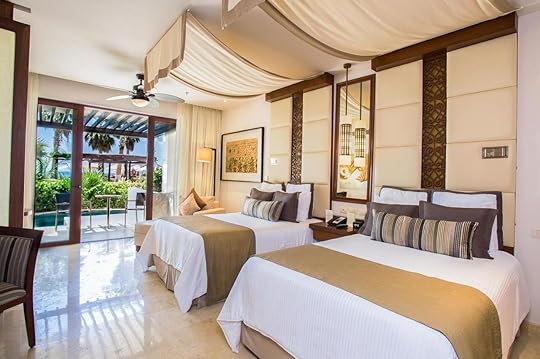
Photo: Booking.com

Photo: Booking.com
This beachfront all-inclusive, adult-only resort combines the classic beach resort experience with a golf vacation. Secrets Playa Mujeres Golf and Spa Resort is home to an 18-hole course, with greens fees included in the overall resort cost. Apart from the beach just steps from your room, guests can also enjoy gourmet dining, several swimming pools, and suites with swim-out access. The resort is also perfectly located for exploring Riviera Maya and Cozumel, an area of the country known for both its nightlife and ancient Mayan ruins.
All-inclusive adults-only resorts in Puerto Vallarta3. Casa Velas — Puerto Vallarta
Photo: Booking.com

Photo: Booking.com

Photo: Booking.com
Casa Velas is one of the few boutique-sized adult-only, all-inclusive resorts in Mexico, offering an intimate atmosphere for adults looking for a relaxing getaway. Under 15 minutes from the heart of Puerto Vallarta, the resort is known for its Emiliano restaurant, which incorporates local flavors into its gourmet cuisine. For a more casual vibe, there’s also food at the Táu Beach Club just a two-minute shuttle ride away. Though the resort isn’t right on the beach, the property has an oversized pool as well as a lush garden for guests to enjoy without venturing offsite.
All-inclusive adults-only resorts in Los Cabos4. Le Blanc Spa Resort — Los Cabos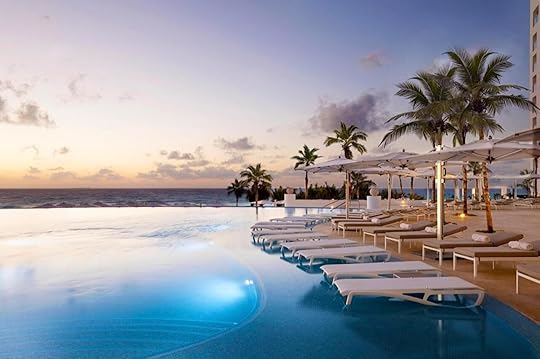
Photo: Booking.com

Photo: Booking.com

Photo: Booking.com
Le Blanc truly lives up to its name. The aesthetic is defined quite literally by white hues, making for a sleek, modern feel. One of the resort’s most attractive features is the 29,000-square-foot spa, giving guests free access to the hydrotherapy circuit (thermal, healing pools), as well as a range of massage and facial treatments. The resort also has several onsite restaurants serving everything from Italian to Asian cuisine. Its signature restaurant, Lumiere, is known for its seven-course French fusion menu.
All-inclusive adults-only resorts in Riviera Maya5. El Dorado Casitas Royale by Karisma — Riviera Maya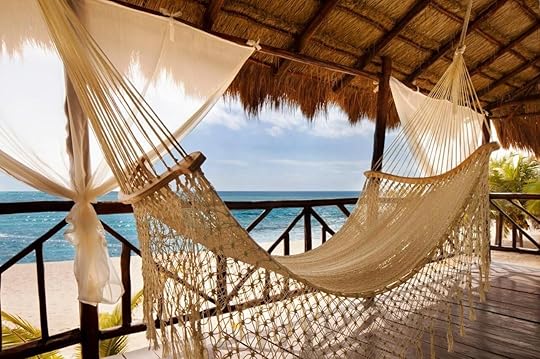
Photo: Booking.com
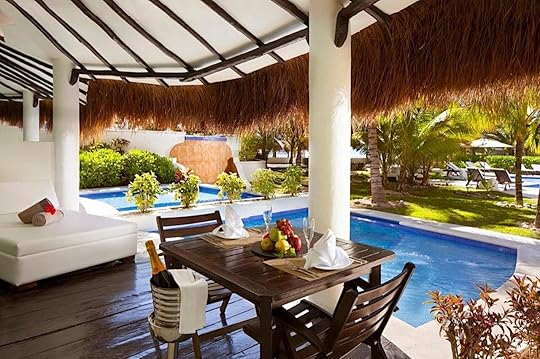
Photo: Booking.com
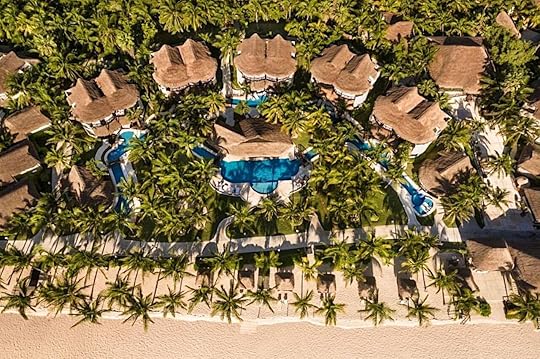
Photo: Booking.com
An AAA Four Diamond Resort, El Dorado Casitas Royale is the adult-only wing of the adjacent resort bearing the same El Dorado name. Located between Cancun and Playa del Carmen, the resort is defined by its thatch roofs, relaxing gardens, white hammocks, and rooms with private swim-up terraces. There’s also a spa, perfect for a romantic couples getaway, and a 76,000-square-foot greenhouse onsite, so you know your meals are being prepared with the freshest produce.
6. Unico 20˚ 87˚– Riviera Maya
Photo: Booking.com

Photo: Booking.com
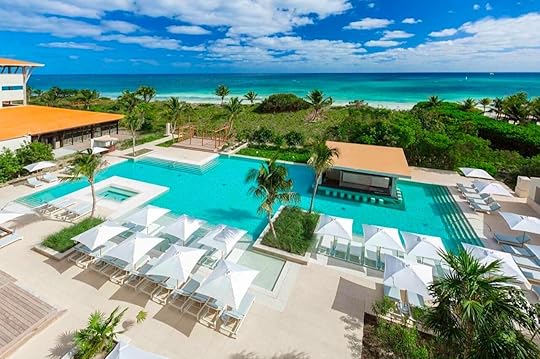
Photo: Booking.com
This all-inclusive resort in Riviera Maya blends traditional Mexican culture with all the amenities you’d expect from a luxury resort. Right when you walk into the hotel you’ll notice local art hanging from the walls — most of which is available for purchase — and events designed to immerse you in the region’s culture, like mezcal tastings and live music. All rooms come with either a swim-up pool or outdoor balcony spa tub, and spa treatments are included in the hotel cost as well.
7. Secrets Akumal — Riviera Maya
Photo: Booking.com

Photo: Booking.com

Photo: Booking.com
Situated right on the white-sand beaches of Akumal in Riviera Maya, this five-star all-inclusive, adult-only resort stands out for something you might not expect: sea turtles. Akumal actually means “place of the turtles” in Mayan, and the bay is full of sea turtles which you can see up-close while snorkeling. From taking an easy day trip to Chichen Itza or Tulum to relaxing onsite at the spa or infinity pool, there’s plenty to do here. They even offer a “Secrets UnlimitedLuxury” experience with 24-hour room service, pool and beach wait service, nightly entertainment, and a mini-bar that’s refreshed daily. 
February 21, 2022
Why anyone interested in traditional Mexican spirits needs to try pox

While hunting for mezcal in a Mexico City liquor store, my girlfriend and I came across a spirit we had never heard of. The long skinny bottle was labeled POX in bold letters with a colorful weaved bottle holder at the base. We decided to give in to our curiosity and purchased it. When we poured ourselves a small glass that evening, we were immediately hit in the face with the fragrance of homemade tortilla and fresh pressed sugarcane juice. The taste was smooth and earthy with a finish similar to a clean white rum. This deliciously boozy experiment reset our priorities and inspired us to travel to the drink’s heartland, in the highlands of Chiapas State, to discover its origins and meet the people behind the drink’s rise in popularity within Mexico and beyond.
Distilled spirits, from pox to mezcal and beyond, came to the Americas with the arrival of the Spanish. Still, pox’s its roots lie in a pre-hispanic tipple with deep cultural significance. Before the Europeans brought distillation, the Tzotzil Mayans in the highlands of Chiapas would brew an alcoholic beverage made from corn to use in ceremonies and celebrations. Eventually, that sweet corn beer was run through the distillation process.
What resulted was a potent and aromatic spirit that became known as pox, pronounced “posh,” a Tzotzil word meaning medicine. For the Tzotzil communities, pox was used to infuse herbs into medicinal tinctures. Much as the original corn beer, it was also used in celebrations and as a vehicle to another dimension during ceremonies.

Photo: Samantha Demangate
For Mexico’s indegenous communities, corn is seen as sacred and life-giving. Many pox distillers claim that their mission is to spread the sacredness of corn, or maíz.
Flavor, history, and a commitment to preserving the traditional process is setting up Chiapas, the southernmost state in Mexico that shares a border with Guatemala, as the next geographical hotspot for producing artisanal spirits.
“One of my first goals when I started this brand was to help people feel proud about the local spirit from our state,” says Sofia Vidal Díaz, CEO of Poxna in San Cristobal De las Casas. When asked about the drink’s cultural importance, Sofia and other top producers are quick to advocate the importance of corn. “There’s a lot of deep things we would love to show to people about corn.”
As a distillate, pox is versatile. Many distillers macerate ingredients like cacao, hibiscus, and passionfruit into the mash to create a wide range of flavorful infusions. Simple ceremonial pox, the kind any hard-nosed spirit fanatic would be wooed over, is a high quality distillate made from corn and a touch of sugarcane and wheat — ingredients added boost the sugar content needed to begin fermentation. Once the mash is fermented, the liquid is distilled once or twice.
“People are starting to pay attention to the new brands that are pushing high quality distillation,” Vidal Díaz says.
Vidal Díaz was also quick to add that, “as a producer, it’s so important to promote corn as the base ingredient for our Pox so people have a really high quality experience when trying it for the first time.” For Pox, the quality and type of corn is important. Poxna often uses the variety maiz blanco criollo, a native maiz that is considered one of the mother varieties of domesticated corn.

Photo: Samantha Demangate
More recognition for pox hasn’t come without its own set of issues. Sugar and wheat remain important in the process of making pox, yet over use is controversial. Wheat and sugar are inexpensive and the sugars easily convert to alcohol, making both attractive as bases for distillation compared to more rare local corn varieties. By distilling more sugar or wheat than corn, you produce a drink that’s less in line with the original pre-hispanic corn beer.
“People with a lot of money to market their brand are buying cheap pox, putting on labels, and marketing it as a sugar cane alcohol,” Vidal Díaz says. This seems to be a concern shared among many people in the pox industry who fear that unregulated competition will threaten the culture behind the drink.
This is where artisanal producers are taking things into their own hands. Like mezcal in Oaxaca, artisanal pox produced in Chiapas is becoming a sought after cultural commodity that many people are trying to protect. Poxmyl, run by David Armendariz Lessieur and Mildred Lilia Sanchez Najera, is another company striving to produce high quality pox in a way that preserves the traditional corn-based recipes.
“I’m seeing pox’s popularity increase,” Armendariz Lessieur tells me. “People and the world deserve to know more about it.”
Poxmyl takes its patrons on a full tasting and educational experience. Thanks to artisanal producers like Poxmyl and Poxna, more and more people are spreading the word about a traditional Mexican spirit other than tequila or mezcal.
Pox’s reputation as a high quality spirit is traveling fast and mixologists around the world are falling in love with it. Still, within Mexico it’s difficult to find in most bars, and only a few places in Mexico City have it on the menu. This also means that it’s the perfect time to solidify the small local producers as the spirit’s caretakers before the big conglomerates take over.
As Armendariz Lessieur passionately states, pox “is an undiscovered diamond but in the intent to know it we have to be very careful not to industrialize it.”
How to try pox
Photo: Samantha Demangate
Access to pox is limited in both the United States and Mexico — Siglo Cero is the only brand likely to be found in the US, and only in limited markets, while it’s the rare Mexico City bar that carries the spirit. The easiest place to find pox is in its home state of Chiapas.
Poxna: Open for tastings in the brand’s tasting room from 12 to 8 PM.
Where: Calle Belisario Domínguez 35, interior 2. Barrio del Cerrillo. CP. 29220 San Cristóbal de las Casas, Chiapas, México.
Poxmyl: Open for tastings in the brand’s tasting room.
Where: Francisco León 1-A, Zona Centro, San Cristóbal de las Casas, Chis., México
Posheria: Pox-focused bar and distillery.
Where: Real de Guadalupe 46A Col. Centro Histórico. San Cristóbal de las Casas Chiapas 29230 México
Matador Network's Blog
- Matador Network's profile
- 6 followers



